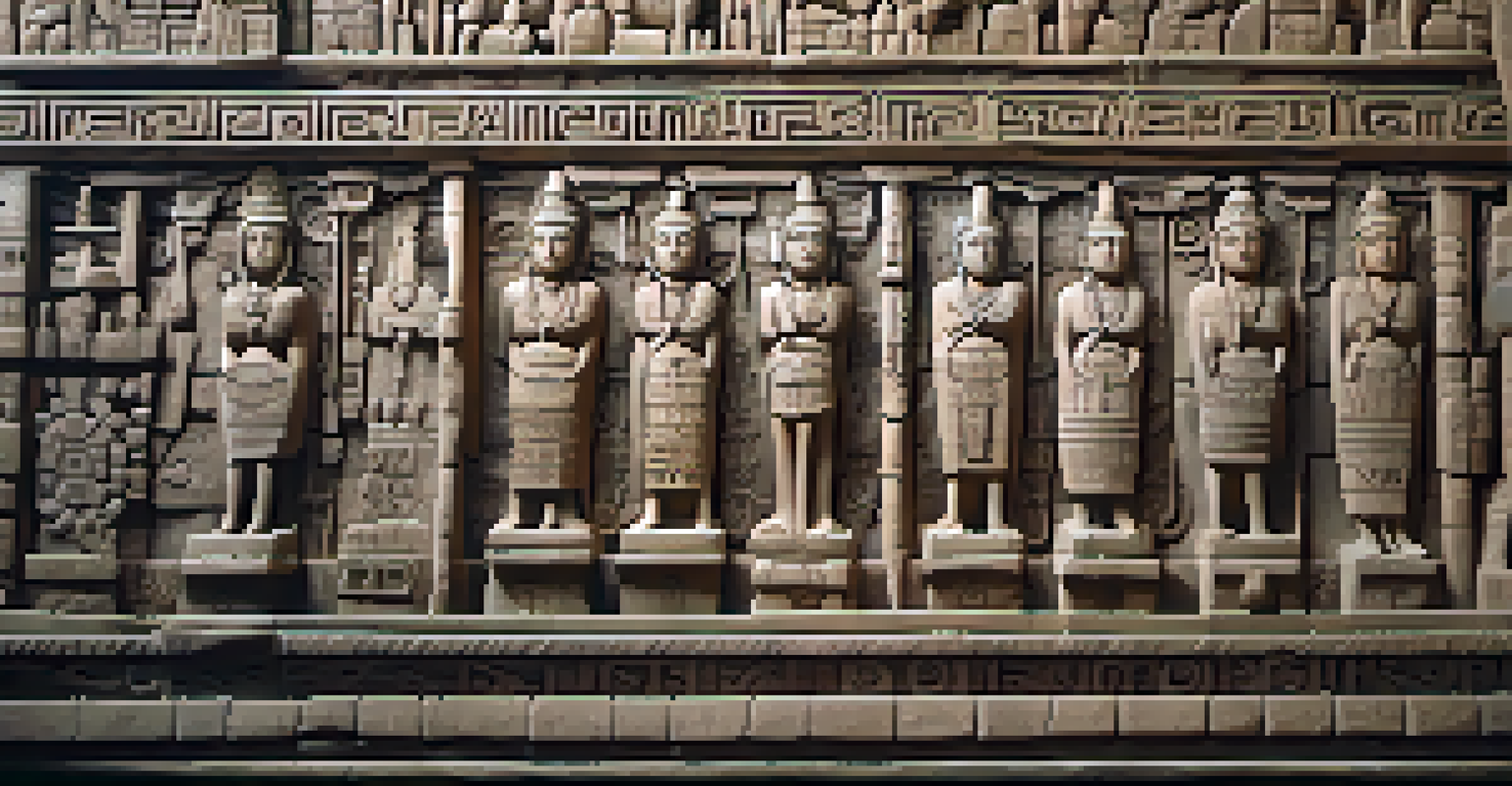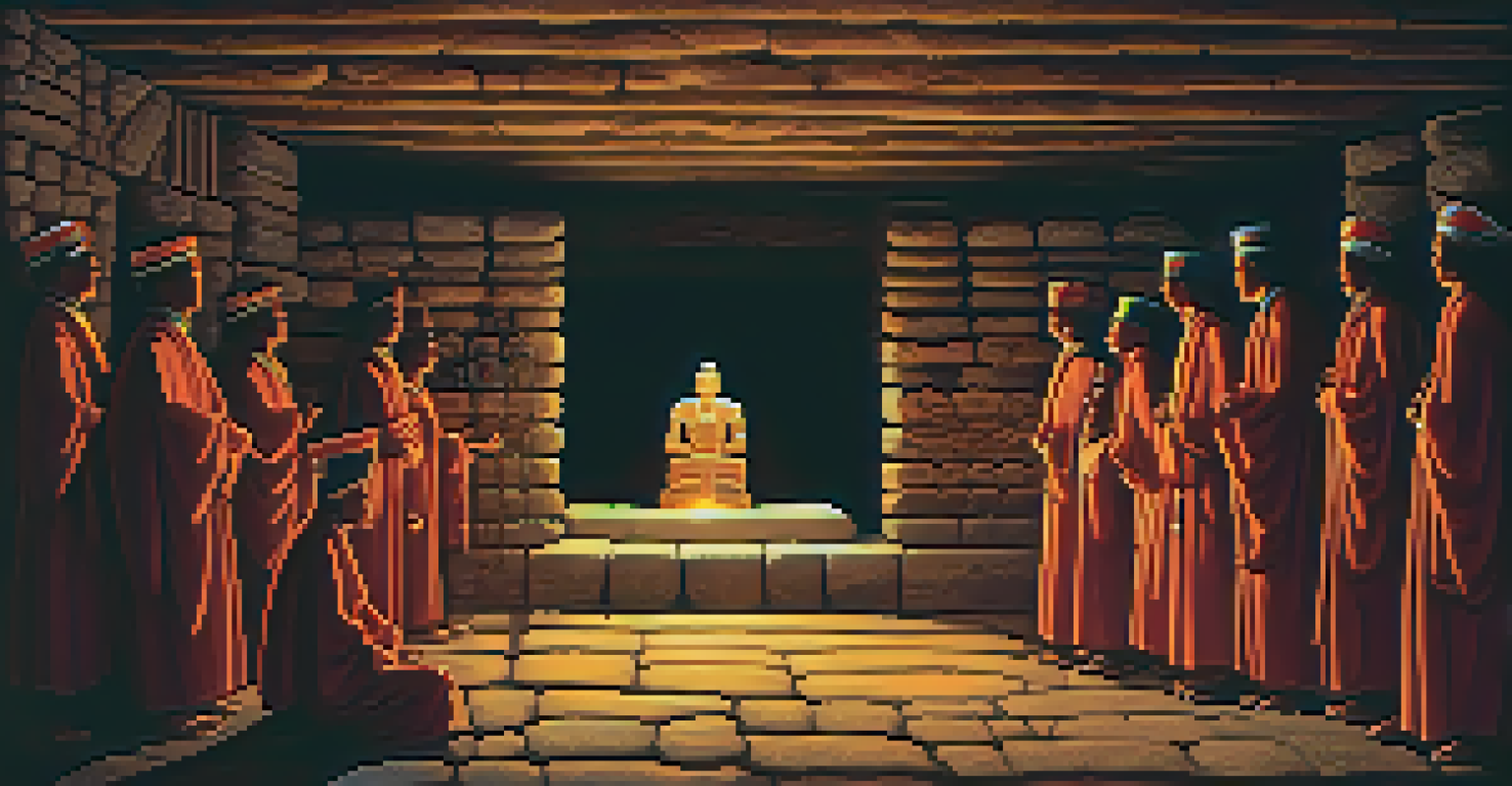The Mysterious Chavín de Huantar: A Religious Center

Introduction to Chavín de Huantar and Its Significance
Chavín de Huantar is an ancient archaeological site nestled in the Andes of Peru. Recognized as one of the earliest urban centers in the Americas, it holds immense historical and cultural significance. This site dates back to around 900 BC, serving as a hub for religious and ceremonial activities among ancient civilizations.
The past is not dead; it is living in us, and we are living in the past.
The importance of Chavín de Huantar lies in its role as a pilgrimage destination, attracting people from various regions. It functioned not only as a religious center but also as a cultural melting pot, influencing surrounding communities. The architectural designs and intricate stone carvings illustrate the advanced skills and beliefs of the Chavín civilization.
Today, Chavín de Huantar is a UNESCO World Heritage site, drawing attention from historians, archaeologists, and tourists alike. Its unique blend of artistry and spirituality continues to captivate those who seek to understand the mysteries of ancient cultures.
Architectural Marvels of Chavín de Huantar
The architecture of Chavín de Huantar is nothing short of mesmerizing, showcasing advanced engineering techniques for its time. The site features a complex layout of temples, plazas, and ceremonial spaces, all constructed from massive stone blocks. This not only served practical purposes but also reflected the community's strong spiritual connections.

One of the most notable structures is the Old Temple, which features a labyrinth of underground galleries and passageways. These intricate designs are believed to have been used for ritualistic purposes, enhancing the mystical experience for pilgrims. The acoustic properties of the site are particularly fascinating; sounds resonate throughout the chambers, adding an auditory dimension to the religious experience.
Chavín de Huantar: A Cultural Hub
Chavín de Huantar served as a significant religious and cultural center, influencing surrounding communities through its advanced architecture and spiritual practices.
The iconic Lanzón Stone, a carved monument depicting a deity, is central to the site’s spiritual significance. This stone is thought to have served as an oracle, where priests would communicate divine messages. The artistry and symbolism embedded in Chavín de Huantar's architecture provide a glimpse into the profound beliefs of its inhabitants.
The Role of Religion in Chavín Society
Religion was the cornerstone of Chavín society, influencing every aspect of daily life. The people of Chavín believed in a pantheon of gods, which shaped their rituals and ceremonies. This spiritual framework provided a sense of community and purpose among the inhabitants.
History is not a burden on the memory but an illumination of the soul.
Priests held significant power within the society, acting as intermediaries between the gods and the people. They conducted elaborate ceremonies, often involving music, dance, and offerings to appease the deities. These rituals not only reinforced the social hierarchy but also solidified the community’s shared beliefs.
The integration of religion and daily life is evident in the artifacts discovered at the site, including ceremonial items and pottery. These findings reveal the deep connection between spirituality and the Chavín way of life, illustrating how their beliefs were interwoven with their culture.
Chavín de Huantar's Influence on Neighboring Cultures
The influence of Chavín de Huantar extended far beyond its immediate surroundings, impacting various cultures across ancient Peru. As a major religious center, it played a pivotal role in the dissemination of cultural practices and beliefs. The architectural styles and religious iconography seen in Chavín can be traced in subsequent civilizations.
Archaeologists have found similarities between Chavín artifacts and those of later cultures, such as the Moche and Nazca. This indicates that the Chavín civilization laid the groundwork for future societies, impacting their social structures and spiritual practices. The spread of Chavín's religious ideologies helped unify diverse groups across the region.
Religious Practices Shaped Society
The intertwining of religion with daily life in Chavín society fostered a strong community identity, with priests playing a central role in conducting rituals.
The legacy of Chavín de Huantar continues to be felt today, as its symbols and practices are echoed in modern Peruvian culture. This enduring influence underscores the significance of Chavín as a cultural cornerstone in the Andes.
The Mysteries of Chavín Iconography
One of the most intriguing aspects of Chavín de Huantar is its rich iconography, filled with symbols and motifs that convey deep spiritual meanings. The artwork often features jaguar and serpent imagery, representing power and transformation. These symbols were integral to the Chavín belief system and played a crucial role in their rituals.
Deciphering the meaning behind these symbols is a challenge for researchers. Each motif is thought to convey specific messages about the natural world and the cosmos. The interconnectedness of these symbols reflects the Chavín people's understanding of life, death, and rebirth.
In addition to stone carvings, pottery and textiles from the era also showcase intricate designs, providing further insight into their artistic expression. These artifacts not only highlight the skill of Chavín artisans but also serve as a window into the spiritual life of the civilization.
Discovering Chavín de Huantar Today
Visiting Chavín de Huantar today offers a unique opportunity to step back in time and experience the remnants of this ancient civilization. The site is accessible to tourists, who can explore the ruins and marvel at the impressive architecture. Guided tours often provide deeper insights into the history and significance of the site.
The surrounding landscape adds to the allure of Chavín, with stunning views of the Andes mountains. This natural beauty enhances the spiritual atmosphere that once enveloped the ancient pilgrims. Many visitors leave with a renewed appreciation for the ingenuity and resilience of the Chavín people.
Enduring Influence on Future Cultures
Chavín de Huantar's architectural styles and religious ideologies laid the groundwork for subsequent civilizations, leaving a lasting legacy in Peruvian culture.
Efforts to preserve and protect Chavín de Huantar are ongoing, ensuring that future generations can appreciate this remarkable heritage. The site stands not only as a testament to the past but also as a symbol of cultural continuity in Peru.
Conclusion: The Enduring Legacy of Chavín de Huantar
Chavín de Huantar remains a powerful symbol of ancient Peruvian civilization, embodying the intricate relationship between culture, religion, and architecture. Its legacy continues to inspire awe and curiosity among scholars and visitors alike. As we uncover more about this enigmatic site, we gain valuable insights into the minds and lives of its ancient inhabitants.
The mysteries surrounding Chavín de Huantar remind us that history is not just about dates and events, but about the stories and beliefs that shape cultures. The rituals, symbols, and architectural wonders left behind serve as a bridge connecting us to a distant past.

In exploring Chavín de Huantar, we not only honor the achievements of an ancient civilization but also reflect on the enduring human quest for meaning and understanding in a complex world.